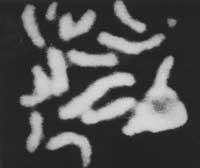The illuminated genome of yeast
In 1992, after two years of work, all chromosome 3 of the yeast used in 37 European laboratories to make bread was sequenced. At that time the result devoured a lot of dust and was considered the greatest discovery that has been made in some scientific journals.
Four years later the remaining 15 yeast chromosomes have been sequenced in 100 European laboratories. The team led by André Goffeau of the Catholic University of Louvain has also maintained a close relationship with research groups in the United States, Canada and Japan.

It is the first time that the entire sequence of the eukaryotic organism is known (i.e., a complex living being with a well-delimited core). Now we need to know the role of the 6,100 genes found. A third of them know the protein they make. The function of another third is also perceived, but in the third they know nothing at the moment. Moreover, in the kingdom of the living there is nothing like it.
This work has paved the way for medical research, as more than half of yeast genes are similar to human genes. That is not surprising, of course, because man and yeast come from the same anchor that lived a billion years ago. The genome sequence will be the reference to compare the genes of other eukaryotic organisms (humans).
This will allow us to better understand the functioning of the genes involved in different types of cancer. Some genes related to antibiotic resistance have been found. In the industry it is expected to find genes to improve the bread-making process and beer. Data is available to all scientists via the Internet.
Buletina
Bidali zure helbide elektronikoa eta jaso asteroko buletina zure sarrera-ontzian











